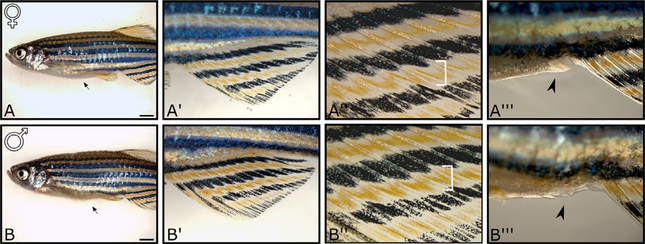Fig. 1.
Sexually dimorphic phenotypes that distinguish adult female and male zebrafish. 6-month-old female (A–A‴) and male (B–B‴) zebrafish. Low magnification view shows that females (A) have a larger abdomen (arrow) then males (B). Low magnification view of the anal fins (A′ and B′) shows that females have lighter yellow pigmentation then males. High magnification view of the anal fins (A” and B”) shows that the yellow pigment stripes in females are narrower than those in males (brackets). The genital papilla protrudes from the ventral body surface in females (arrow in A‴), but not in males (arrow in B‴). Scale bar in A and B, 2mM.

